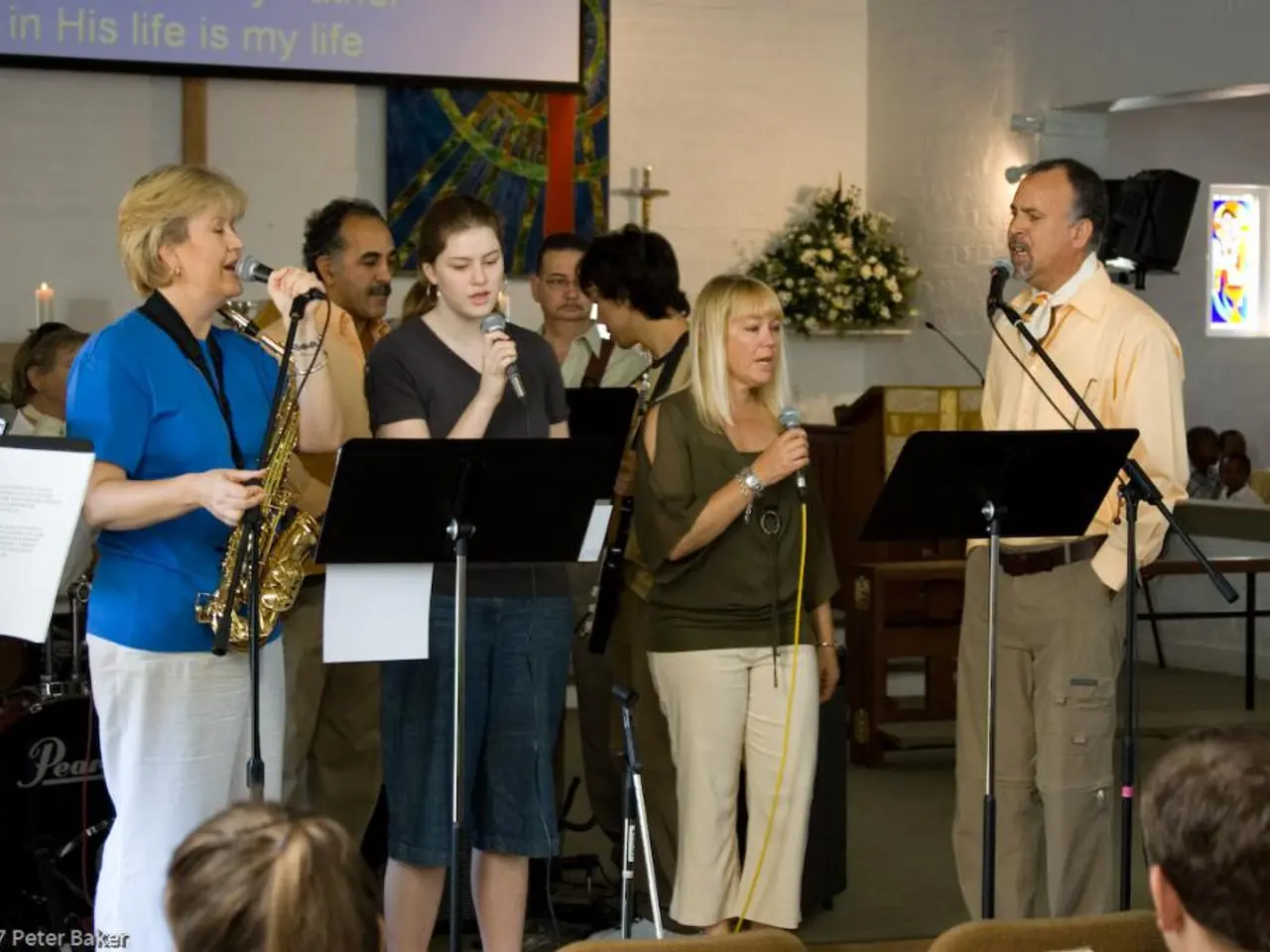Fostering Artistic Networks within the Realm of Web3 Technology
In the ever-evolving landscape of creative industries, the principles of collaboration and shared ownership are proving to be timeless. Both traditional creative networks and Web3 communities are embracing these principles to foster meaningful collaboration, drive innovation, and create thriving ecosystems.
Traditional creative networks, such as those found in companies like Apple and Amazon, emphasize cross-departmental collaboration and a culture of teamwork. By breaking down silos and encouraging open communication, these networks spark innovation and solve complex challenges.
On the other hand, Web3 communities are decentralized networks governed by code, consensus mechanisms, and shared ownership. They rely on blockchain infrastructure to enable transparent governance, token-based incentivization, and automated smart contracts that align incentives between contributors and the community.
Enhanced Innovation and Creative Problem-Solving
Both environments encourage diverse contributors to collaborate openly, combining expertise and perspectives to generate novel ideas and solutions. This cross-pollination of ideas occurs through people with different skills and perspectives coming together in traditional networks, while in Web3 communities, it's facilitated by the decentralized structure.
Empowerment and Ownership for Creators
Web3’s decentralized governance and token models empower creators with direct influence over decisions and financial rewards, disrupting traditional gatekeeper models in creative sectors. This democratization of the creative process is a significant shift that allows more individuals to contribute and benefit from the creative process.
Increased Inclusivity and Democratization
Web3 communities can lower barriers to entry, allowing a broader range of participants to contribute and benefit. This inclusivity can lead to more diverse creative outputs and sustainable ecosystems. In traditional networks, non-hierarchical coordination allows for emergent decision-making processes from the group, further promoting inclusivity.
More Resilient and Adaptive Collaboration Models
By embedding collaboration as a core organizational principle or coding it into decentralized protocols, both types of networks maintain agile, sustainable creative processes that can scale and evolve over time.
In essence, both traditional creative networks and Web3 communities capitalize on shared governance, transparency, collective ownership, and aligned incentives to create meaningful, dynamic collaborations. This approach reshapes creative industries by fostering environments where innovation thrives through trust, open participation, and shared success.
The Future of Creative Communities
The future lies in bridging traditional and Web3 collaborative tools, amplifying timeless principles that make creative communities thrive. Stablecoin infrastructure has crossed a $250B market cap with $7T annual on-chain volume, demonstrating mature financial rails for creative economies. The steadily increasing total value locked in DeFi shows maturity beyond speculation in the Web3 space.
The most updated logo design trends in 2025 are relevant to both traditional and Web3 creative communities. Checking for logo uniqueness and usage remains important in both contexts. Recognition and reward systems for valuable contributions in Web3 communities are token-based, mirroring traditional reward systems.
Examples of DAOs, such as FlamingoDAO and The LAO, demonstrate diverse applications of decentralized collaboration. The 240% increase in DeFi user activity indicates a growing number of people using new collaborative tools in the Web3 space.
Web3 tools are enhancing and making globally accessible the principles of traditional design networks through blockchain infrastructure. The beginner's guide to illustrating a children's book applies to traditional and digital illustration, including Web3 art. DAO-to-DAO collaborations are creating new patterns for creative work, fostering creativity and innovation through diversity of thought.
In conclusion, the future of creative communities is one where traditional and Web3 collaborative tools coexist, amplifying the timeless principles that make creative communities thrive. This approach will foster environments where innovation thrives through trust, open participation, and shared success.
Technology facilitates both traditional creative networks and Web3 communities, enabling decentralized governance and automated smart contracts in the latter, and fostering cross-departmental collaboration in the former.
The collaboration in Web3 communities, powered by technology, empowers creators, lowers barriers to entry, and fosters inclusivity, contributing to more diverse creative outputs and sustainable ecosystems.




